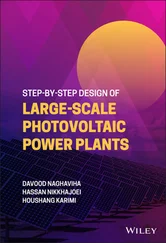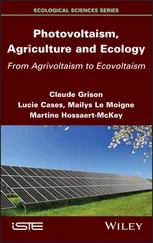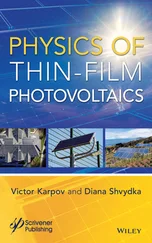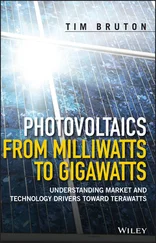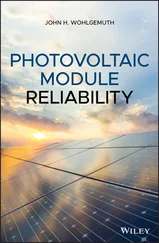Moving to recent times, the long-anticipated explosion of wireless devices in our living environments has taken hold, and simultaneously the amount of function you can achieve at lower power has expanded. Processing, sensing, and even wireless communication have exploited advances in microelectronics fabrication/design, smart power management, and frameworks/protocols to do much more with fewer ergs, while energy conversion and dynamic optimal load matching has become much more efficient, even at the microwatt level and for a variety of different source impedances. This increased function per microwatt has boosted what can be done with a little bit of exposed PV cell, and applications have followed. Already in the mid-1990s we designed and deployed scores of smart IR beacons for indoor location at the MIT Media Lab that ran off light from proximate florescent bulbs [22]. During the last decade, we have run several of our embedded wireless sensing systems from small PV cells (e.g., our Tidmarsh environmental sensing node powers from a tiny solar cell atop its package; a few hours of diurnal daylight or a bit longer in overcast skies will serve to keep it powered [23]), and for low duty-cycle applications, we have built similar embedded light-powered sensors that work indoors.
This is no longer unusual, and various PV-powered wireless sensors have appeared for years now, some by commercial vendors, like the Schneider HOMES temperature/humidity/CO2 sensor developed by our former collaborators at Schneider Research in Grenoble a decade ago. But nonetheless, although the outdoor market for low-power wireless PV devices is robust (witness, for example, commonplace solar-powered outdoor lighting), few indoor PV-powered sensors have achieved widespread commercial viability. This is mainly due to the fact that as power decreases to the point where energy harvesting becomes an option, an embedded battery can last potentially many years, often approaching either the anticipated device lifetime, the battery’s shelf life, or just lasting long enough to make replacement a limited irritation (witness how we tolerated batteries in smoke alarms over the past decades), now often announcing over a wireless link when batteries need to be replaced. Batteries pose the ultimate dilemma to energy harvesting, as they are just so cheap and convenient. Plus, they don’t run the risk of failing in darkness, and can deliver brief pulses of high current (e.g., a commodity wireless IoT sensor bought today can draw a couple of amperes from a pair of AA cells for a few seconds when first joining an 802.11 network).
Things are changing now on many fronts, and this situation will evolve. For one, indoor photovoltaics are themselves improving. Although the efficiency of real high-end silicon solar modules in bright sunlight can significantly exceed 20%, recombination and spectral mismatch effects in the low light conditions we find indoors can cut efficiencies at least in half [24]. Indeed, the efficient world of LED and fluorescent lighting that we live in now emits at wavelengths less friendly to canonical silicon, and partly in response, ongoing research in photovoltaics has developed many approaches to converting light efficiently across broader spectral ranges. Exploiting these techniques to exhibit better performance at spectra now commonly exhibited indoors, as well as shifting away from straight silicon to new materials like perovskite, GaAs, and Cd compounds, hint at raising this efficiency by a factor of 2 to 3, albeit introducing some complexity in toxicity, manufacturing, etc.; the following chapters in this book explore this in detail. Similarly, needed power levels are still decreasing, not only for processing and sensing, but also for joining “heavier” mainstream networks like 801.11 or 5G, not to mention continued evolution in their low-power brethren like the now ubiquitous BLE and the multitude of other short-range contenders (e.g., ZigBee, Z-Wave, RF-backscatter, etc.).
The sheer number of wireless devices in the environments we live and work in will also continue increasing; at some point, this will cross a level at which battery replacement is less tolerable, together with a profusion of sensors in hard-to-access areas that still have low but usable levels of light (e.g., for environmental control, material integrity, leakage and structural assessment, safety, etc.). Also, as lighting has become more efficient and networked, and cheap renewable energy drops basic power costs, one possibility would be for areas of dwellings to illuminate for an interval when people aren’t present just to charge the sensors; they will tell the smart home or IoT servers when they are running low and need an illumination hit, or just raise the shades to let enough daylight in. Long-range inductive charging is a potential competitor here [25], but efficiency loss with range, orientation, and still unacceptably large EMI are show stoppers here, together with the lack of infrastructure; our homes and offices are amply lit, but don’t yet (and probably won’t) have large induction coils in the floors and walls (on the other hand, I see Helmholtz-coil-laden closets, draws, and shelves as potential ways to conveniently charge wireless electronics embedded in clothing).
Hence, we’re at a crossroads here—the dominance of batteries in low-power sensors and systems may well be close to ending as IPV technology advances and smart environments can coordinate their assets to conserve the energy of distributed wireless embedded systems and even recharge them when needed. Both batteries and photovoltaics are differently weighted in terms of manufacturing energy, toxicity, etc., and it’s not clear how much photovoltaics will come out ahead over a device’s lifetime, but the race is certainly on, and the incentives will continue.
I’m delighted to see this book arrive now—this is certainly the right time for it, and many of the things I’ve barely hinted at above are explored much more fully in the chapters ahead. But let’s check back in after another decade passes to see what will be energizing the low-power devices scattered throughout our environments—and, in what I currently find most exciting and profoundly important, how the data they produce is used and leveraged. In the context-driven world of the future, every bit will mean something—here’s hoping that they all will serve us well!
1 1. Paradiso, J.A. and Starner, T., Energy scavenging for mobile and wireless electronics. IEEE Pervasive Comput., 4, 1, 18–27, 2005.
2 2. Starner, T. and Paradiso, J.A., Human generated power for mobile electronics, in: Low-Power Electronics, vol. 45, C. Piguet (Ed.), pp. 45-1–45-35, CRC Press, Boca Raton, Florida, USA, 2004.
3 3. Mitcheson, P.D., Yeatman, E.M., Kondala Rao, G., Holmes, A.S., Green, T., Energy harvesting from human and machine motion for wireless electronic devices. Proc. IEEE, 96, 9, 1457–1486, 2008.
4 4. Choi, Y.-M., Gu Lee, M., Jeon, Y., Wearable biomechanical energy harvesting technologies. Energies, 10, 1483, 1–17, 2017.
5 5. Kymissis, J., Kendall, C., Paradiso, J., Gershenfeld, N., Parasitic power harvesting in shoes, in: Proc. of the Second International Symposium on Wearable Computing, pp. 132–139, IEEE Computer Society Press, Pittsburgh PA, October 1998.
6 6. Shenck, N.S. and Paradiso, J.A., Energy scavenging with shoe-mounted piezoelectrics. IEEE Micro., 21, 3, 30–42, 2001.
7 7. Xu, B. and Yang, L., Force analysis and energy harvesting for innovative multi-functional shoes. Front. Mater., 11, September 2019.
8 8. Zhao, J. and Zheng, Y., A shoe-embedded piezoelectric energy harvester for wearable sensors. Sensors, 14, 7, 12497–12510, 2014.
9 9. SolePower, Power by Walking - https://www.kickstarter.com/projects/764467377/solepower-power-by-walking-0?ref=discovery&term=power%20 generating%20shoes(December 2016) or https://www.thisiswhyimbroke.com/power-generating-shoe-insole/.
Читать дальше





